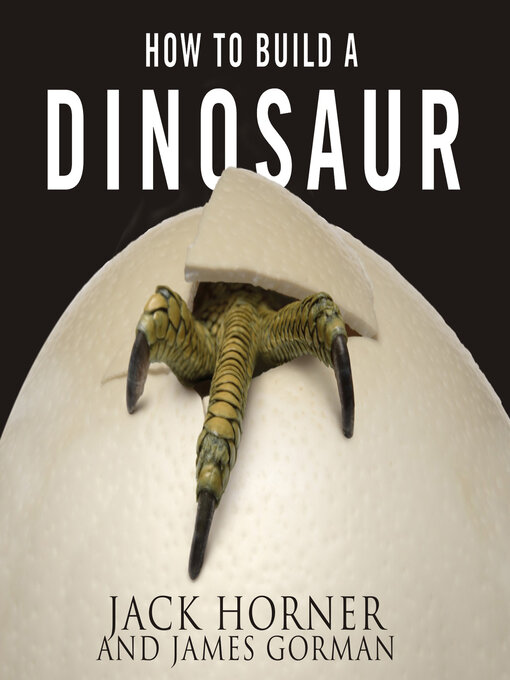In the 1980s, Horner began using CAT scans to look inside fossilized dinosaur eggs, and he and his colleagues have been delving deeper ever since. At North Carolina State University, Mary Schweitzer has extracted fossil molecules—proteins that survived 68 million years—from a Tyrannosaurus rex fossil excavated by Horner. These proteins show that T. rex and the modern chicken are kissing cousins. At McGill University, Hans Larsson is manipulating a chicken embryo to awaken the dinosaur within—starting by getting it to grow a tail and eventually prompting it to grow the forelimbs of a dinosaur. All of this is happening without changing a single gene.
This incredible research is leading to discoveries and applications so profound they're scary in the power they confer on humanity. How to Build a Dinosaur is a tour of the hot rocky deserts and air-conditioned laboratories at the forefront of this scientific revolution.
-
Creators
-
Publisher
-
Release date
April 20, 2009 -
Formats
-
OverDrive Listen audiobook
- ISBN: 9781400191413
- File size: 190254 KB
- Duration: 06:36:21
-
-
Languages
- English
-
Reviews
-
AudioFile Magazine
Jack Horner's quest to hatch a dinosaur makes comparisons to JURASSIC PARK unavoidable--especially given that the paleontologist was an adviser to the film. Rather than extracting DNA from dino blood in a petrified mosquito, however, Horner wants to manipulate the embryo of a chicken and create a bird with teeth and a reptilian tail. Patrick Lawlor's narration of Horner's fascinating book is mostly enthusiastic and engaging, and he's comfortable with the scientific jargon. He does, however, show some insensitivity to the text, delivering banal sentences with a misplaced ebullience and failing to give proper emphasis to more climactic passages. These are not huge flaws, but they detract from an otherwise polished production. D.B. (c) AudioFile 2009, Portland, Maine -
Publisher's Weekly
January 26, 2009
The premise of this provocative but frustrating book by MacArthur Award–winning paleontologist Horner and New York Times
deputy science editor Gorman (coauthors of Digging Dinosaurs
) : a kind of reverse genetic engineering could make it possible to “ build” a dinosaur embryo from the embryo of a modern bird—a chicken, say— since birds are the evolutionary descendants of dinosaurs. The trick would involve the new science of evolutionary development (known as evo devo) and a host of biological techniques. Horner and Gorman argue that during the process, one could stop and analyze every frame of the evolutionary tape as it played in reverse. The authors use the research on tail development of Hans Larsson at McGill University to explore how embryos can illuminate evolution. Much of the rest of the book offers background, but often digresses, for example, into hunting for DNA from 68-million-year-old dinosaur bones or the surfing habit of the man who discovered the polymerase chain reaction or how genetically close humans and Neanderthals are—none of which advances the book’s central argument. B&w illus.
-
Loading
Why is availability limited?
×Availability can change throughout the month based on the library's budget. You can still place a hold on the title, and your hold will be automatically filled as soon as the title is available again.
The Kindle Book format for this title is not supported on:
×Read-along ebook
×The OverDrive Read format of this ebook has professional narration that plays while you read in your browser. Learn more here.


